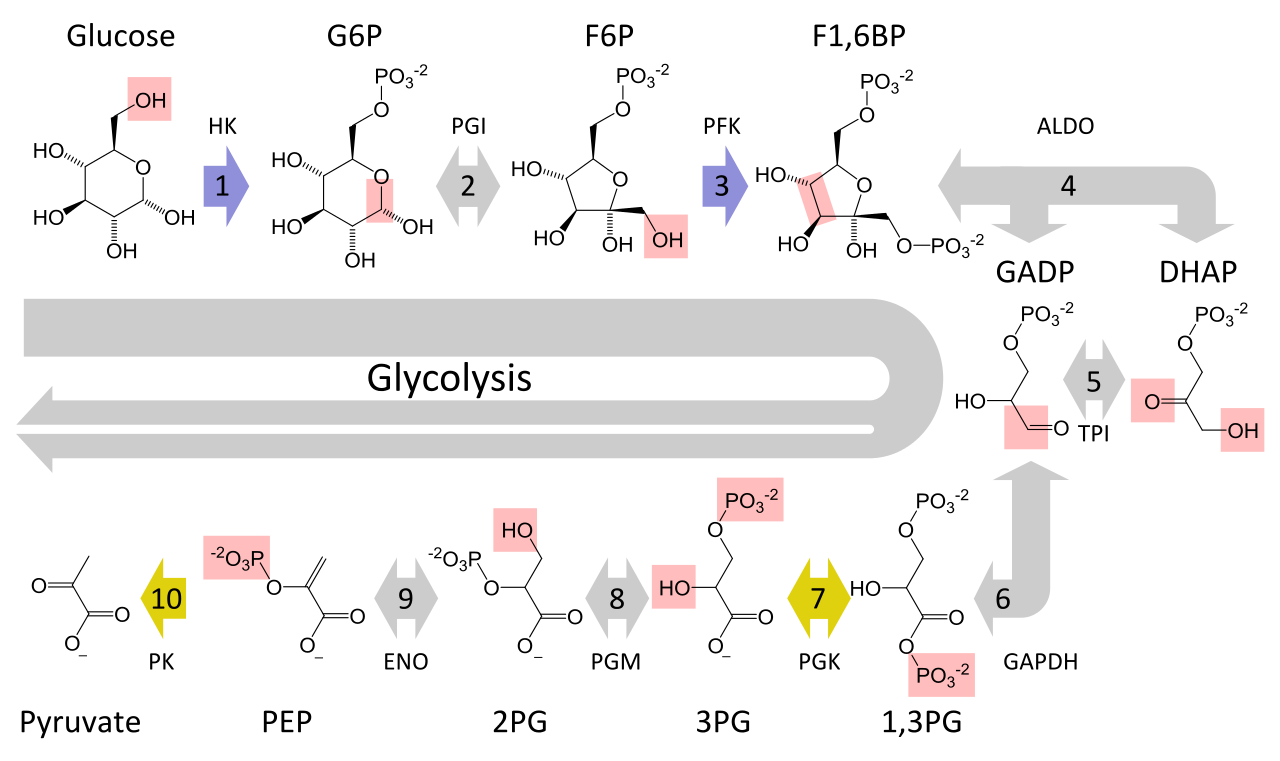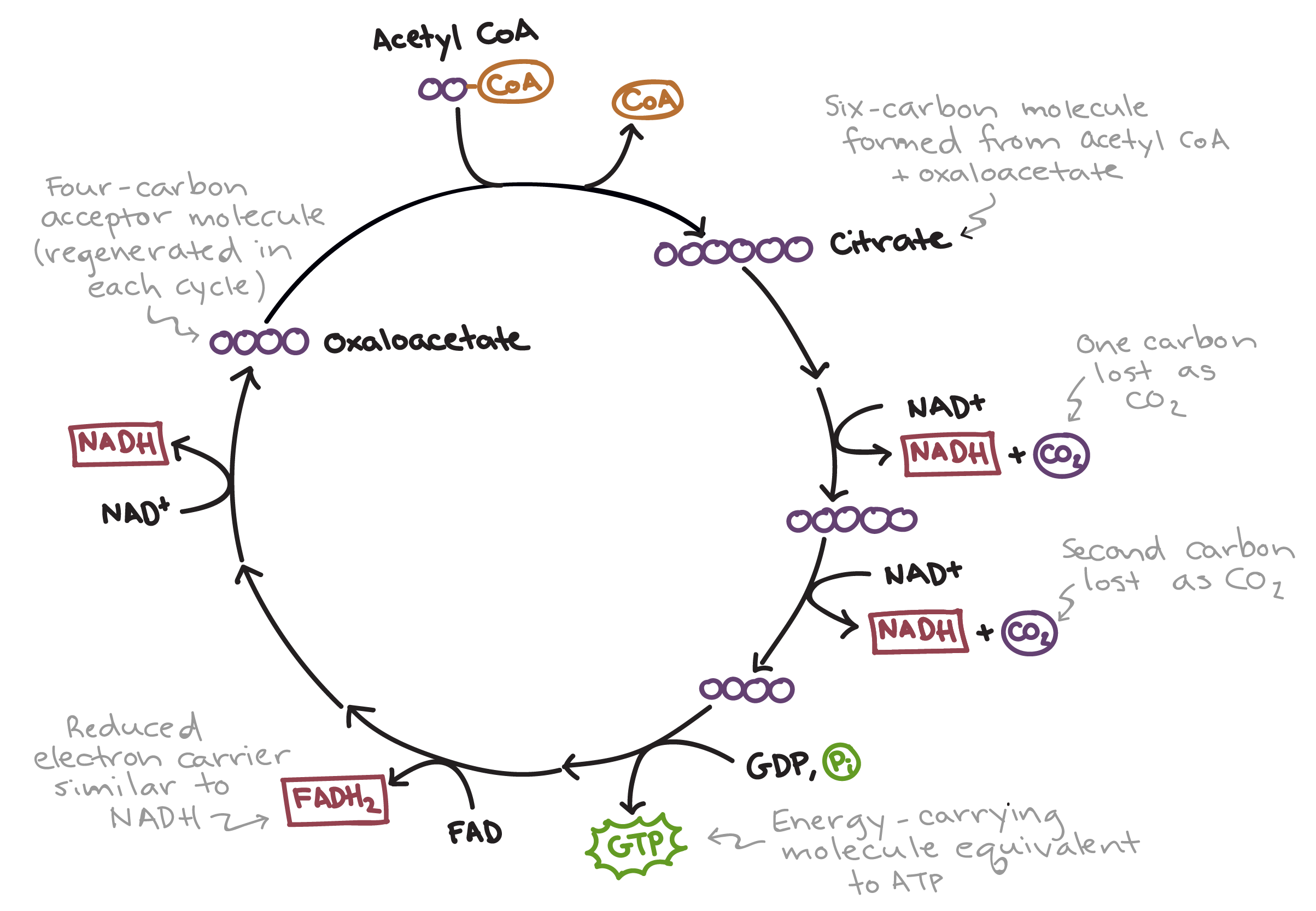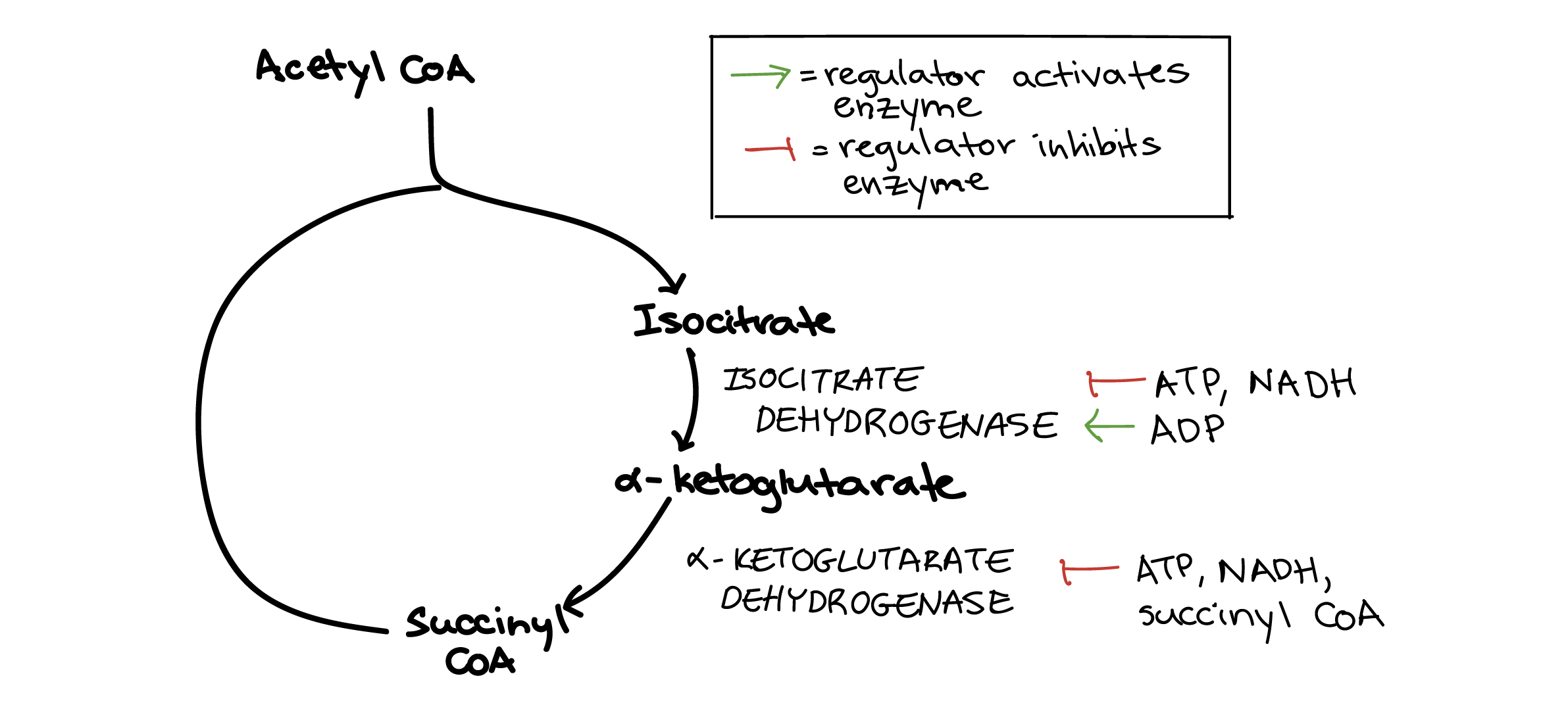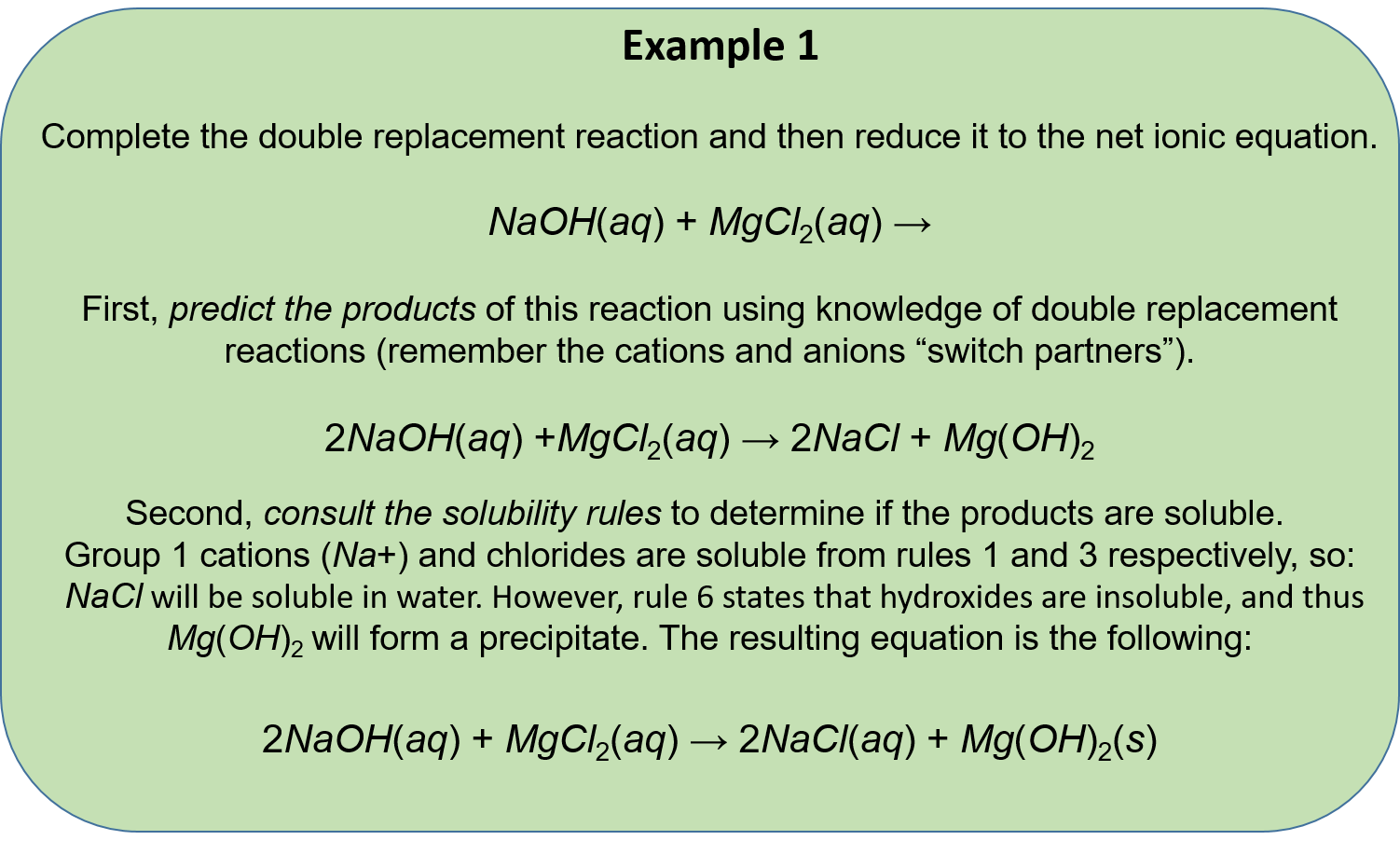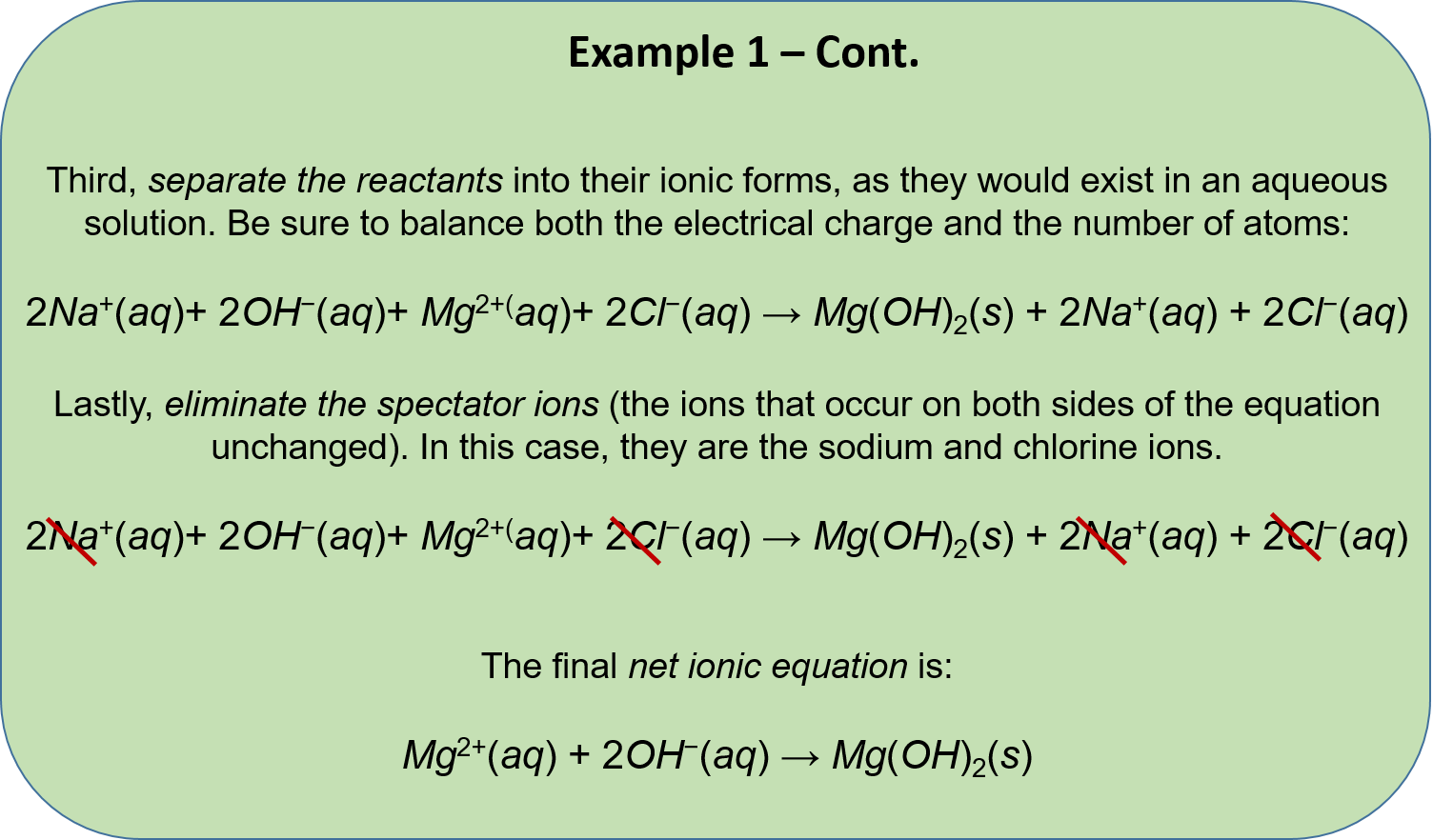Cellular Respiration Formula With States

Cellular respiration occurs in both eukaryotic and prokaryotic cells with most reactions taking place in the cytoplasm of prokaryotes and in the mitochondria of eukaryotes.
Cellular respiration formula with states. Cellular respiration is a set of metabolic reactions and processes that take place in the cells of organisms to convert chemical energy from oxygen molecules or nutrients into adenosine triphosphate and then release waste products. ENE1L7 EK Cellular respiration is a metabolic pathway that breaks down glucose and produces ATP. The word equation for cellular respiration is glucose sugar oxygen carbon dioxide water energy as ATP.
State the number of ATPs produced during glycolysis the transition reaction the Krebs cycle and the oxidative-phosphorylation process. The chemical reaction of cellular Respiration is C6H12O6 6O2 6CO2 6H2O The chemical reaction of photosynthesis is 6CO2 6H2O C6H12O6 6O2 Also Read. Cellular Respiration Definition.
This process breaks down glucose into six carbon dioxide molecules and twelve water molecules. The overall chemical formula for aerobic respiration can be written as. Someone wrote the balanced equation heres the word equation.
The reactions involved in cellular respiration are catabolic reactions that involve the breakdown of larger organic molecules into smaller forms. Cellular respiration is the process by which organisms convert the biochemical energy of nutrients into ATP. Its overall chemical reaction of cellular respiration equation is simplified as.
The cellular respiration equation is a part of metabolic pathway that breaks down complex carbohydrates. Cellular respiration is a set of metabolic reactions occurring inside the cells to convert biochemical energy obtained from the food into a chemical compound called adenosine triphosphate ATP. C 6 H 12 O 6 glucose 6O 2 36 ADP depleted ATP 36 P i phosphate groups 6CO 2 6H 2 O 36 ATP.
Metabolism refers to a set of chemical reactions carried out for maintaining the living state of the cells in an organism. The reactions involved in respiration are catabolic reactions which break large molecules into smaller ones releasing energy because weak high-energy bonds in particular in molecular oxygen are replaced by stronger bonds in the products. C 6 H 12 O 2 6 O 2 6 CO 2 6 H 2 O approximately 38 ATP Translating that formula into English.

